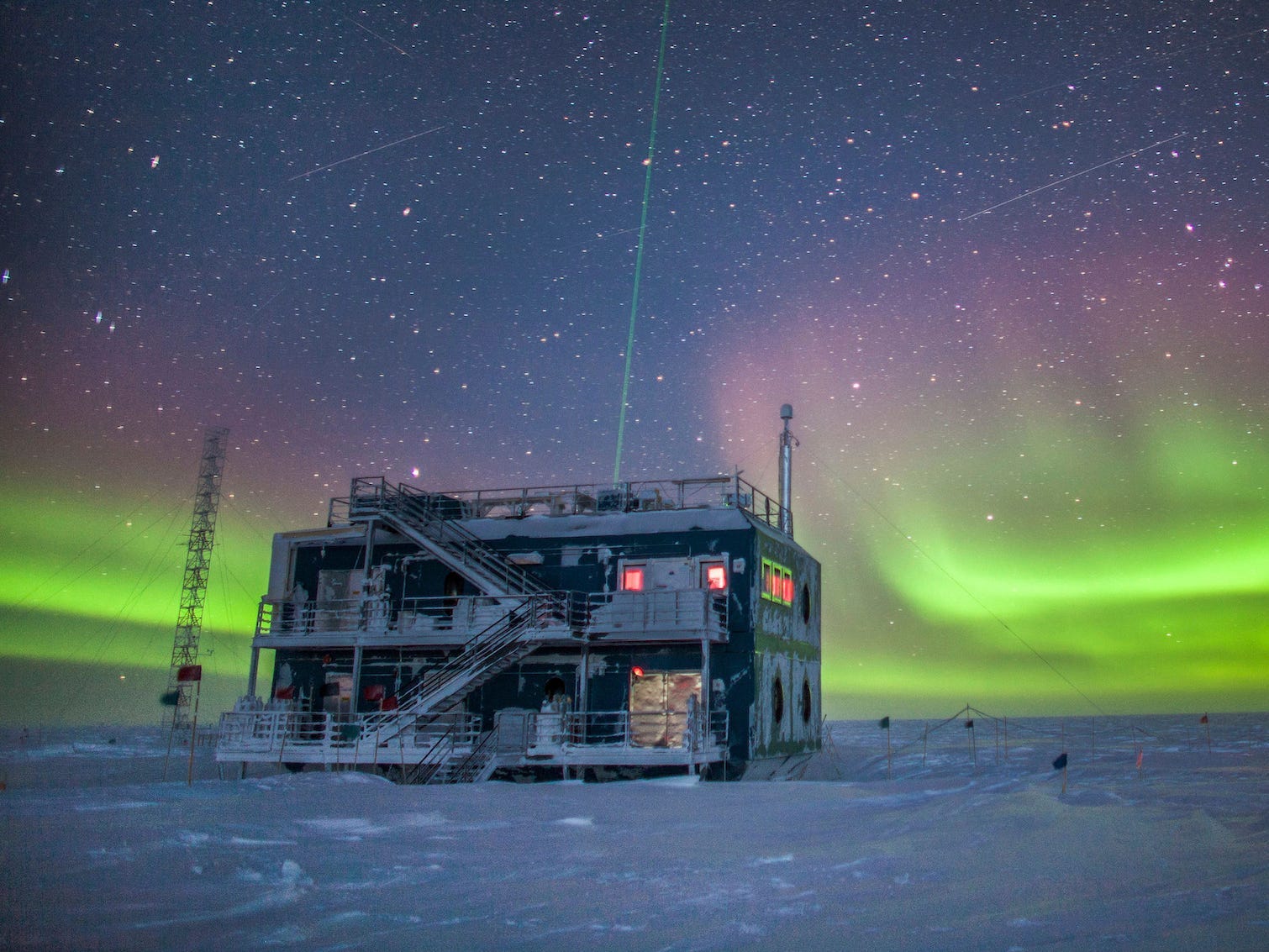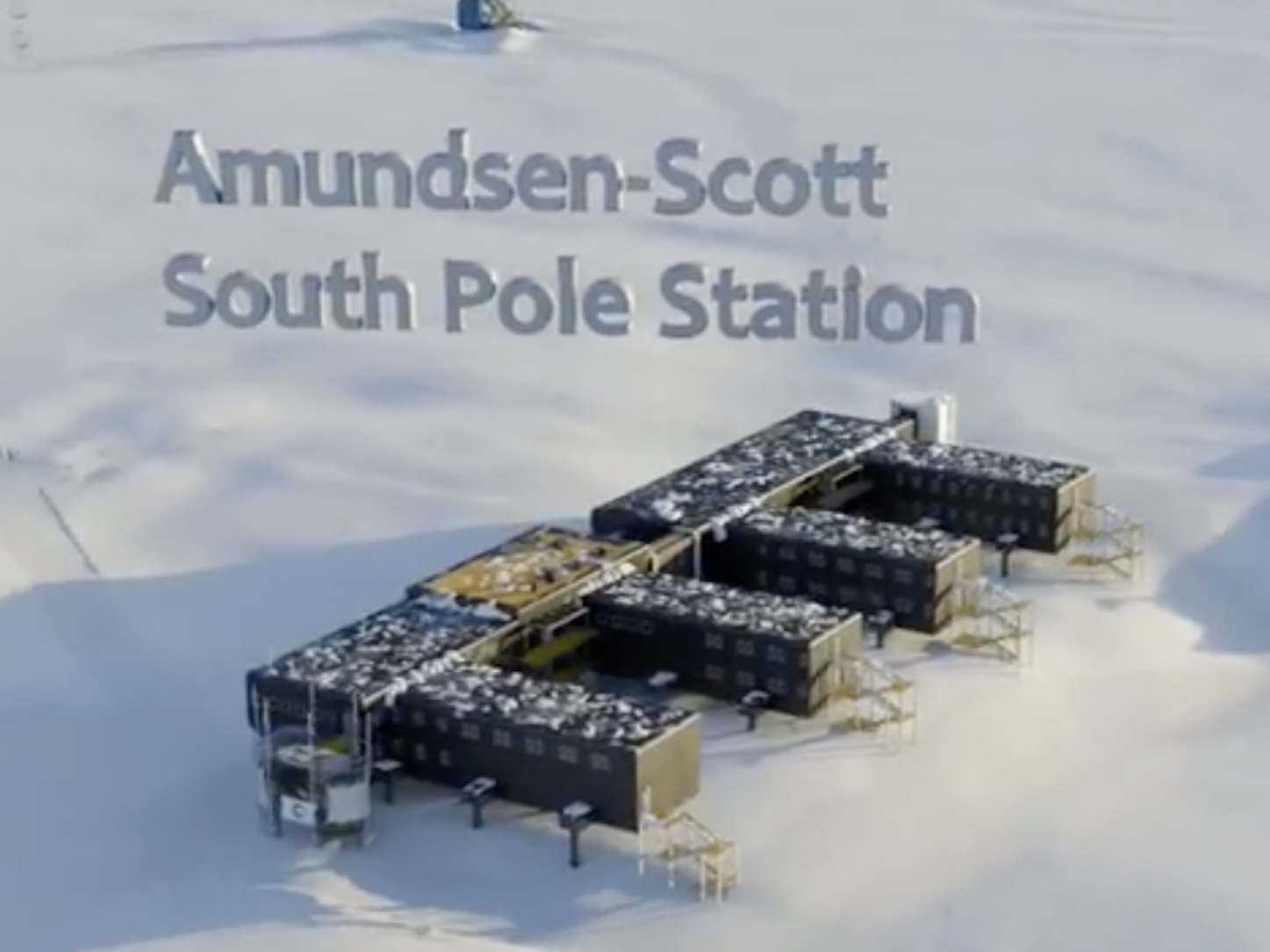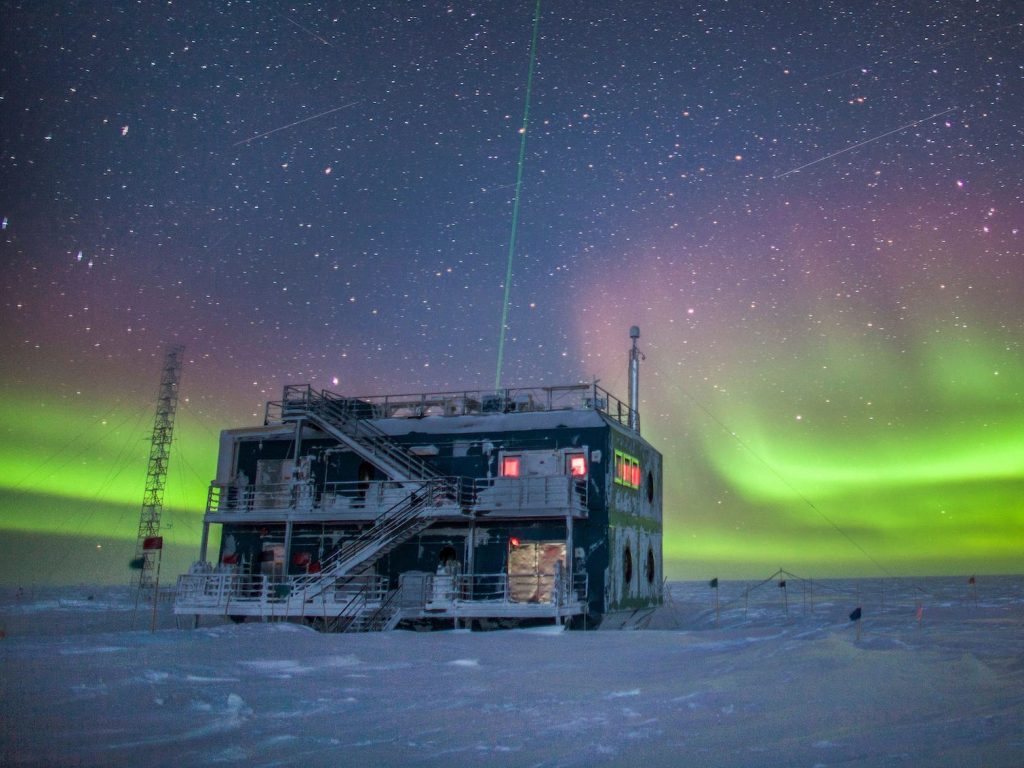
Patrick Cullis/NOAA/AP
- The Amundsen-Scott South Pole station houses some of the world's most sophisticated scientific equipment.
- But the buildings that host those instruments often don't have running water.
- So "pee bottles" are sometimes the best option, according to someone who works there.
- See more stories on Insider's business page.
Amazing scientific discoveries are made at the Amundsen-Scott South Pole Station, a remote research station close to the ceremonial South Pole in Antarctica.
But for those working at the station over the polar winter, dedication to science sometimes means having to give up on the bare essentials.
"The outbuildings generally do not have running water, although there is sometimes a room with a primitive toilet (one that needs to be emptied)," Josiah "Joe" Horneman, a physician assistant working at the station over the winter, told Insider.
The Amundsen-Scott South Pole Station itself, nicknamed the elevated station, has all the mod-cons. Not only does it have indoor plumbing, but it also hosts a gym, a basketball court, a music room, and a craft room.

Josiah Horneman
But most of the scientific work takes place in outbuildings that are within walking distance of the stations, such as the South Pole Telescope, the South Pole Atmospheric Research Observatory (ARO), and the IceCube Neutrino Observatory, as Horneman showed here:
The time it takes to travel from these sites back to the elevated station "varies with the outbuilding and weather," Horneman said.
For instance, the trip to the ARO in perfect weather takes less than 10 minutes, he said.
You can see Horneman walking to the ARO in the video here:
But coming back from a building that is further out, like the IceCube, in bad weather, could take more than 20 minutes, he said.
"So 'pee bottles' or good hustling skills are necessary if you head out to one of them," he said.
Horneman said that for most of the "winter-overs" like himself, this isn't a problem. The work in the outbuilding usually doesn't take much time - it is mostly maintenance, like making sure the boilers are working or checking that scientific equipment is running.
But there is one exception: the ARO. "Those guys are generally out there all day long because they need to take air samples and/or ozone measurements throughout the day," he said.
"They use pee bottles as far as I know," he added.
